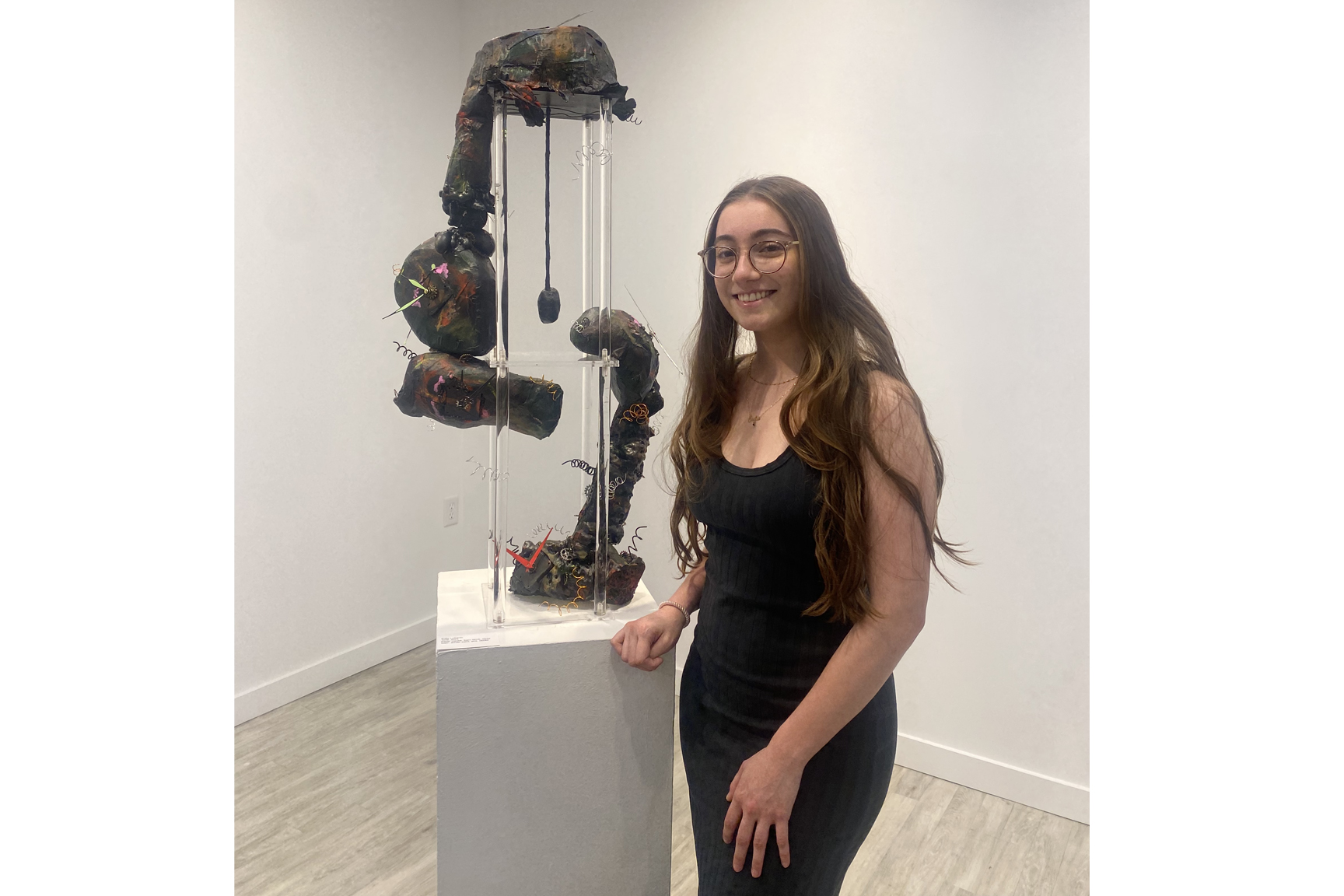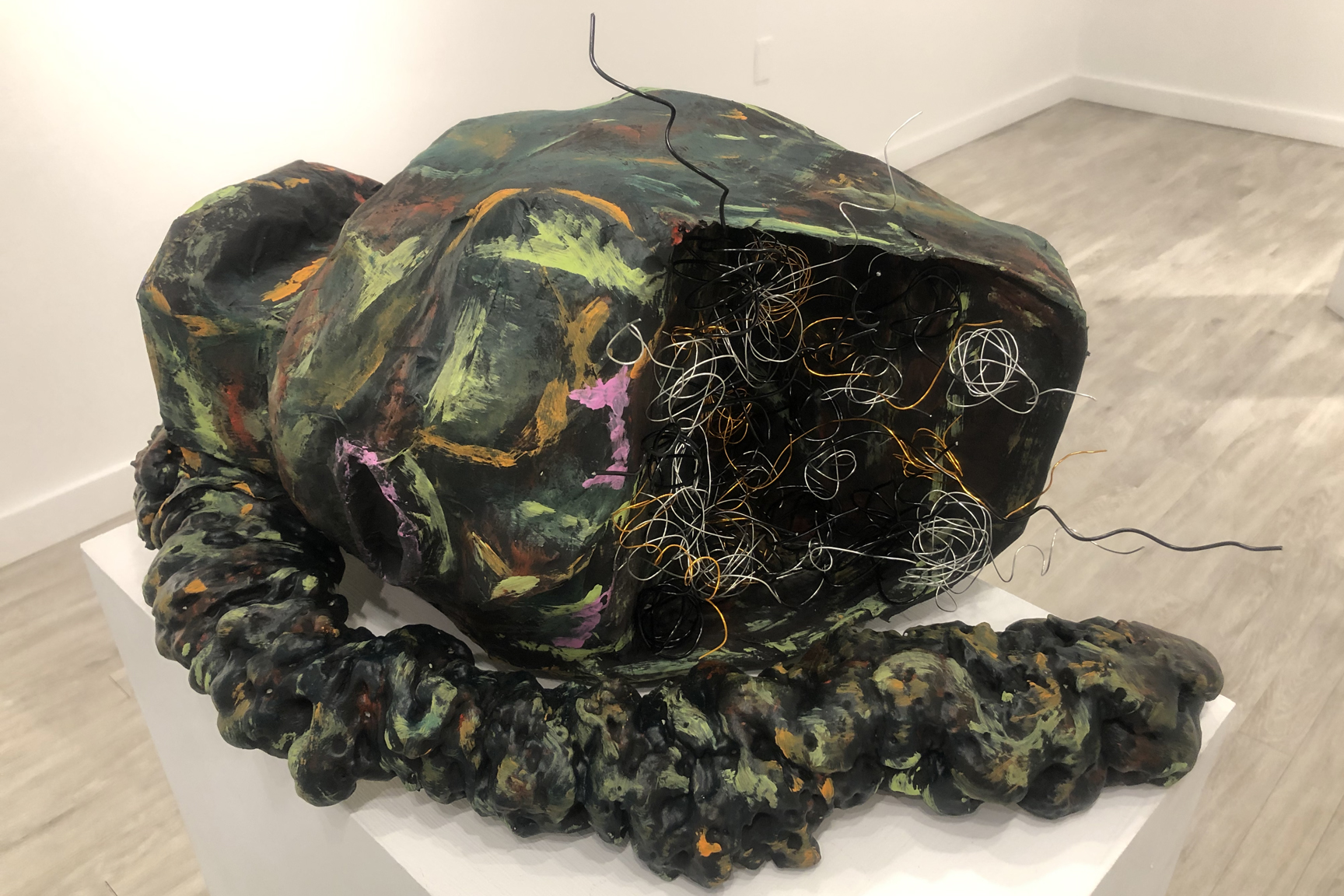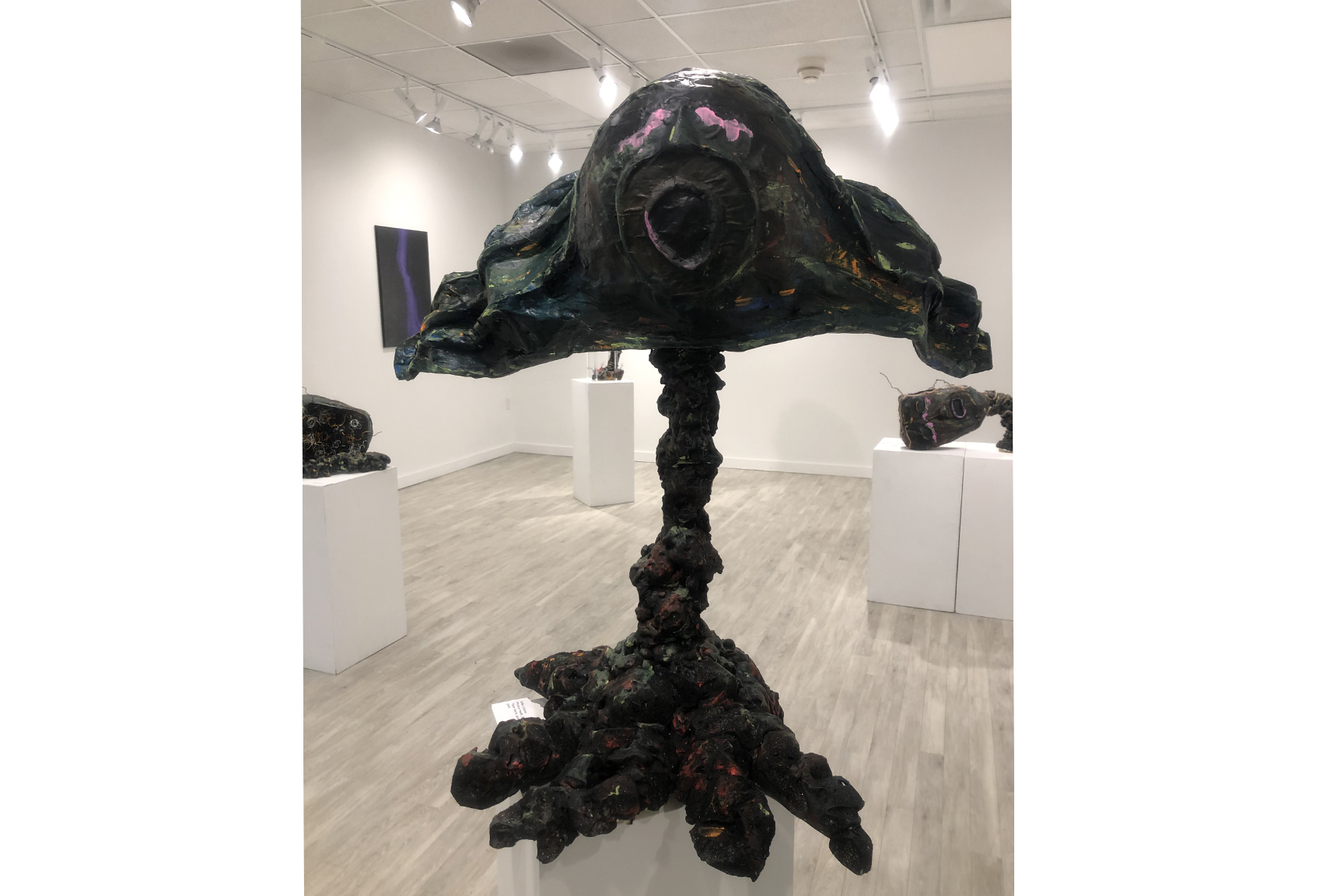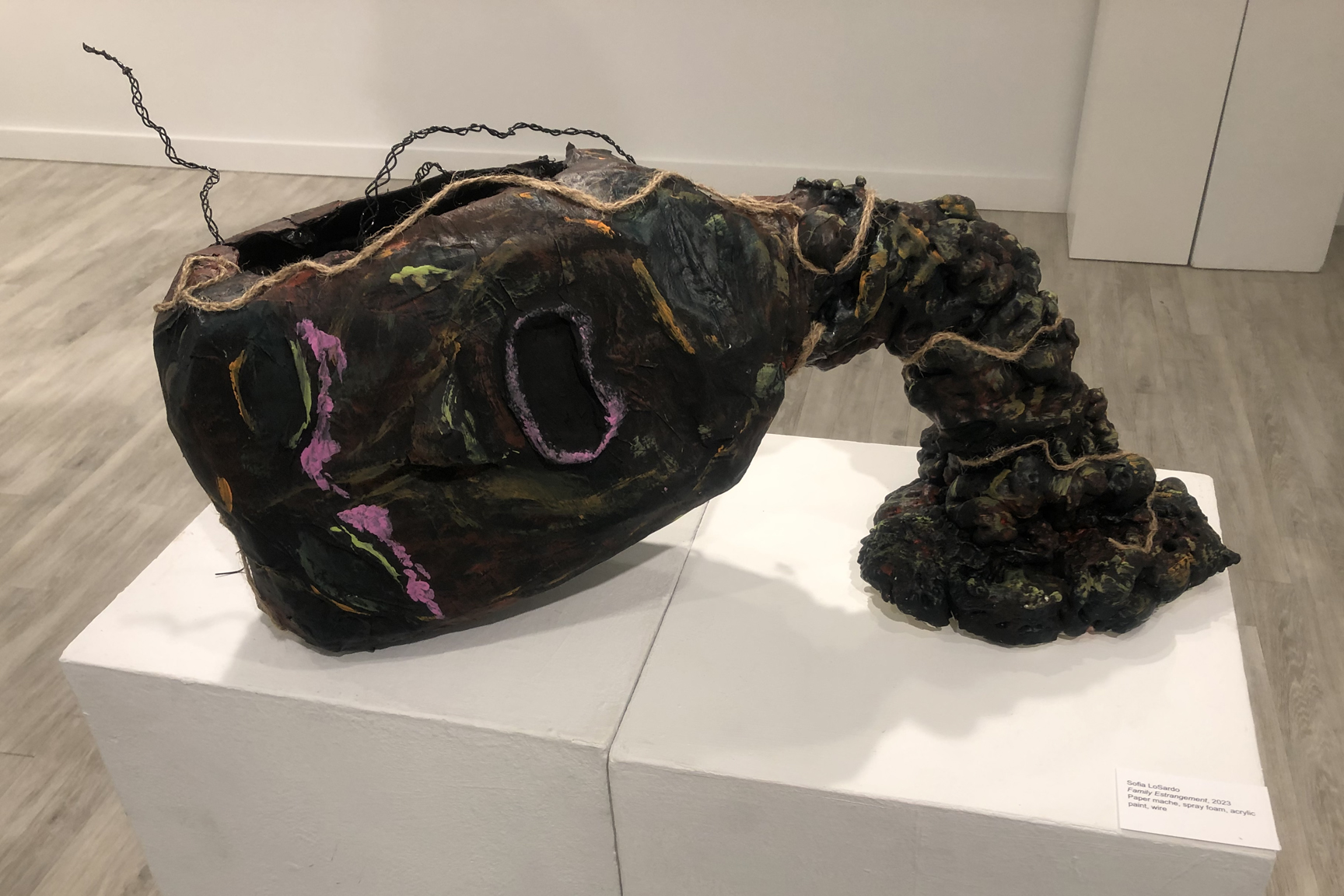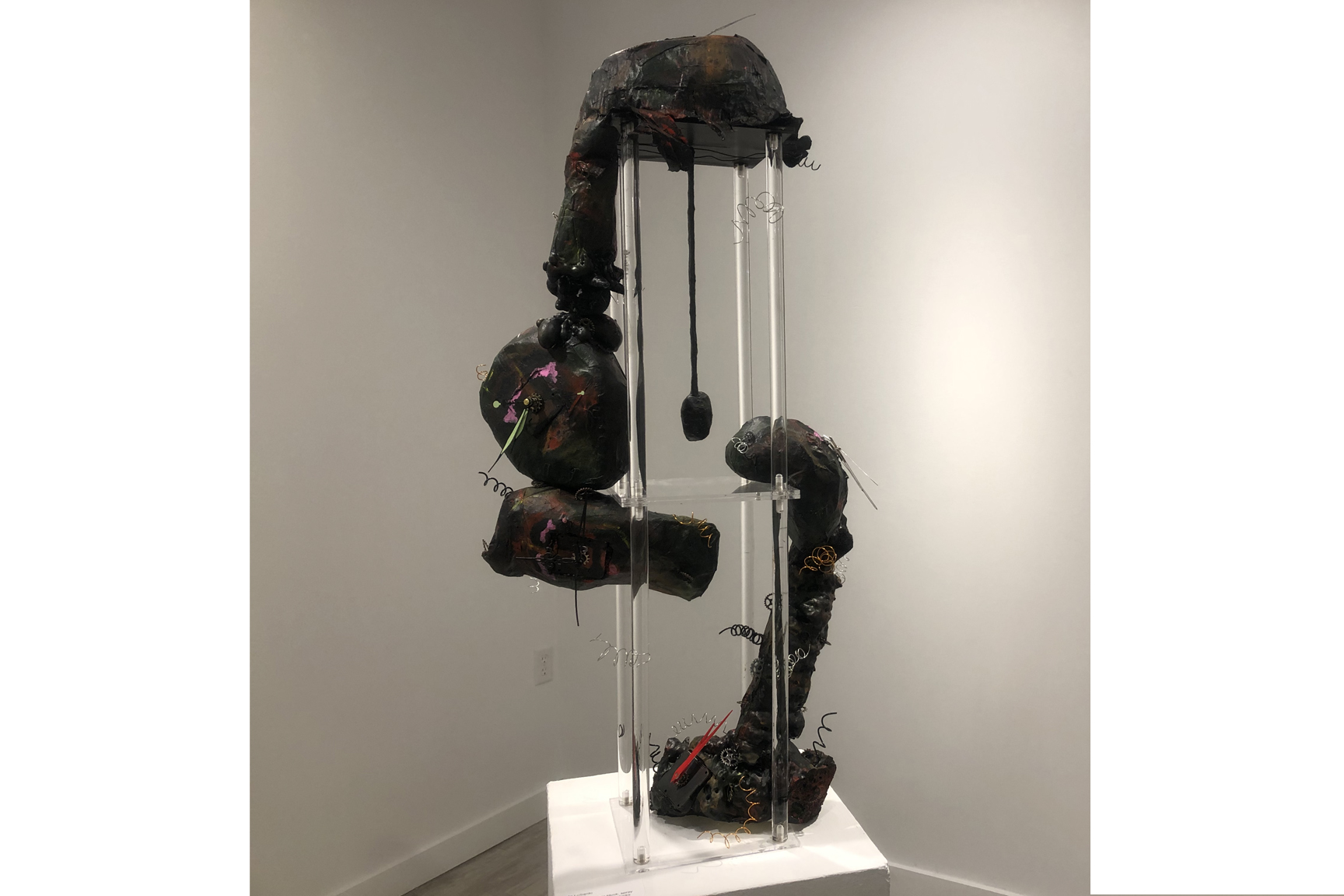Sofia LoSardo
ARTIST STATEMENT
Thesis Title: Disenfranchised Grief
Art is therapeutic for me. Through the creative art making process, I can express myself without having to use words. art therapy allows me to work through my emotional struggles by allowing me to sublimate my feelings into a physical object. My vision with my art is to use symbolism to portray what a certain emotion would look like if it was alive. I expect my audience to learn from my art.
In this exhibition I am talking about disenfranchised grief. Disenfranchised grief is defined as grief that society is not view as acceptable to mourn and/or openly acknowledged. Society disenfranchises (takes away the right) to grieve this type of loss typically because it is not viewed as important and the time of grief is long. Grief makes people uncomfortable, therefore people disenfranchised a person’s grief by telling them to get over it.
Since 2020 my work has been focused on portraying mental health subjects. As someone who experiences the hardship of living with anxiety and has a passion for art therapy, promoting mental health is significant to me. An exhibition on disenfranchised grief became obvious to me as I reflected on the losses I have experienced in my adolescent and young adult life. Mental health has been a common theme in modern art for centuries. Famous examples are Vincent van Gogh and Edvard Munch. Especially life after COVID, the topic of mental health can be seen in many contemporary art works.
My work is expressionistic because of the way I distort objects and figures in my work. I use these forms to evoke an emotional effect. I am heavily inspired by many Expressionist artists, Ernst Ludwig Kirchner and Catherine Kollwitz to name a few. The color palette of German Expressionism has especially influenced my work. The colors are orange, green, blue, red, and black. The colors are bold and saturated yet dark and disturbing. I use these colors to express the effects of mental illness which disenfranchised grief can cause.
I am sharing my experience with certain examples of disenfranchised grief. These examples are loss of physical health, loss of financial security, loss of time, loss of family, and loss of mental health. It is my goal for my audience to leave knowing what disenfranchised grief is and what it looks like for me. I hope sharing my experience will help my audience know they are not alone when expressing grief.


